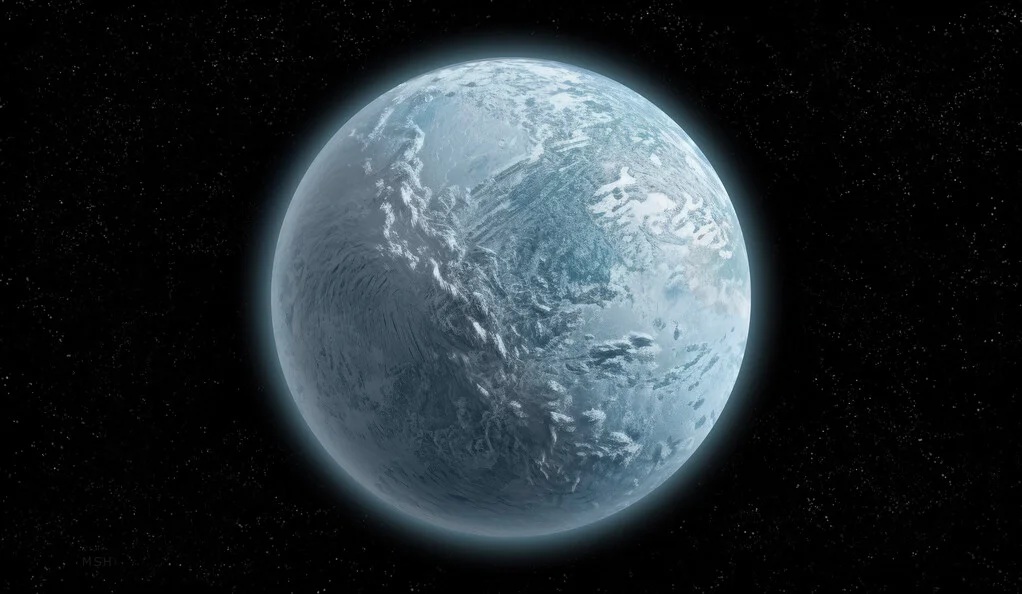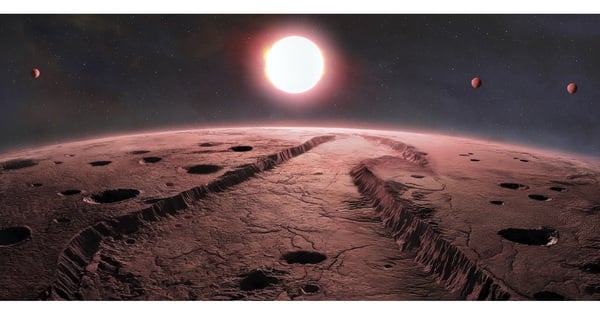(NLDO) - The missing link to prove the hypothesis of a snow-covered planet that existed 700 million years ago has been revealed.
According to Science Alert , about 700 million years ago, the Earth cooled so much that scientists hypothesize that it turned into a snowball completely different from the familiar image of the blue planet.
This global ice age is believed to have lasted for tens of millions of years, seemingly interrupting the evolution of early life on the planet.
Miraculously, however, life on Earth not only survived but was spurred to flourish, with multicellular life first appearing after the ice melted.

Earth may have once turned into a snow planet - Graphic photo: YALE UNIVERSITY
But pieces of this ancient "snow planet" puzzle are still missing.
Evidence for this period is found primarily from sedimentary rocks exposed in areas that once lay along coastlines and in shallow high-latitude seas, as well as through climate models.
Scientists have long searched for physical evidence that today's warm regions were once covered in ice.
In a new study published in the Proceedings of the National Academy of Sciences, geologists claim to have found that missing link in an unusual type of pebble sandstone embedded within the granite that makes up Pikes Peak in Colorado.
Pikes Peak, the highest peak in the Rocky Mountains, was originally named Tavá Kaa-vi by the Ute people because of these strange rocks.
If you split a rock in half, you'll see strange patterns caused by a sand-rich liquid that seems to have been injected into the rock in ancient times.
One possible explanation for what created these mysterious sandstone formations is that the immense pressure of the overlying ice sheet – which existed during the "snowball" terraforming – caused sediment to mix with meltwater and be pumped into the weakened rock below.
Advanced dating methods suggest that this sand pumping occurred between 690 and 660 million years ago.
This time frame means that these sandstones were formed during the Cryogenian period, 720 million to 635 million years ago.
The name is derived from "born in cold weather" in ancient Greek and is synonymous with the climate change that drastically affected planetary life, including the entire globe turning into a snow planet.
So, the final pieces of the puzzle finally fit.
The cause of the extreme cold at the time is still debated, but popular theories suggest that it was related to changes in previous tectonic activity.
This process could lead to phenomena such as massive and simultaneous volcanic eruptions, releasing particles into the atmosphere and blocking out sunlight needed to warm the planet, creating a terrible "volcanic winter."
Source: https://nld.com.vn/tan-tich-hanh-tinh-tuyet-da-mat-lo-ra-tren-dinh-nui-o-my-196241113112842202.htm


![[Photo] Overcoming all difficulties, speeding up construction progress of Hoa Binh Hydropower Plant Expansion Project](https://vstatic.vietnam.vn/vietnam/resource/IMAGE/2025/4/12/bff04b551e98484c84d74c8faa3526e0)
![[Photo] Closing of the 11th Conference of the 13th Central Committee of the Communist Party of Vietnam](https://vstatic.vietnam.vn/vietnam/resource/IMAGE/2025/4/12/114b57fe6e9b4814a5ddfacf6dfe5b7f)

























































































Comment (0)